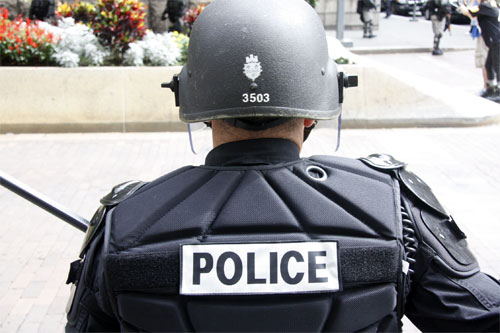
In lieu of the recent fatal police shootings in cities such as Tulsa, Charlotte, and most recently, El Cajon, California, communities are coming together to demand changes in law enforcement interactions. Of particular concern is police surveillance and the subsequent criminalization of minor offenses. “Problem-oriented policing” – which focuses on a community’s “hot spots” and requires police to be more proactive in identifying where crime might happen, as opposed to just reacting after a crime takes place – has been offered as a possible solution. But does problem-oriented policing actually reduce crime? Social science research helps us sort out the potential benefits and pitfalls to problem-oriented policing.
The research record is mixed. Studies evaluating problem-oriented policing programs in Jersey City and Los Angeles showed reductions in serious crimes, such as property crime, robbery, and drug selling, as well nuisance crimes associated with homelessness. Others, however, show no signs of decrease in the number of reported crime rates. Scholars suggest that problem-oriented policing may only have an impact in areas of severe crime and distrust of law enforcement.
- Anthony A. Braga, David L. Weisburd, Elin J. Waring, Lorraine Green Mazerolle, William Spelman, and Francis Gajewski. 1999. “Problem‐oriented Policing in Violent Crime Places: A Randomized Controlled Experiment.” Criminology 37(3): 541-580.
- Richard Berk and John McDonald. 2010. “Policing the Homeless: An Evaluation of Efforts to Reduce Homeless-related Crime.” Criminology and Public Policy, 9 (4): 813-840.
- David Weisburd, Nancy A. Morris, and Justin Ready. 2008. “Risk-Focused Policing at Places: An Experimental Evaluation.” Justice Quarterly 25(1): 163-200.
Additional concerns with problem-oriented policing is its effect on marginalized communities. Both observed environmental cues and implicit racial and ethnic biases affect people’s perception of neighborhood disorder. As such, neighborhoods with high concentrations of racial/ethnic minorities are perceived as having more disorder, and consequently viewed as more dangerous and violent. Residents living in neighborhoods marked by perceived disorder are themselves labeled as threats by law enforcement, perpetuating and reproducing urban inequality and cultural stereotypes.
- Robert Sampson and Stephen W. Raudenbush. 2004. “Seeing Disorder: Neighborhood Stigma and the Social Construction of ‘Broken Windows.’” Social Psychology Quarterly 67(4): 319-342.
- George Kelling and Catherine Coles. 1996. Fixing Broken Windows: Restoring Order and Reducing Crime in Our Communities. New York: Free Press.

Comments 2
Prof Mike Brogden — October 1, 2016
Maybe wrong on this but have always thought of Weisburd as a Zionist who has with settlers on the West Bank. As for problem oriented policing, I do not know any respectable criminologist who takes it seriously. Should see our 2014 book from Routledge on Policing in an Age of Austerity
Ron Berger — October 1, 2016
I have recently posted a related piece focusing more specifically on the issue of stop-and-frisk and racial profiling.
https://wiseguys2015.com/2016/09/28/policing-profiling-and-crime/